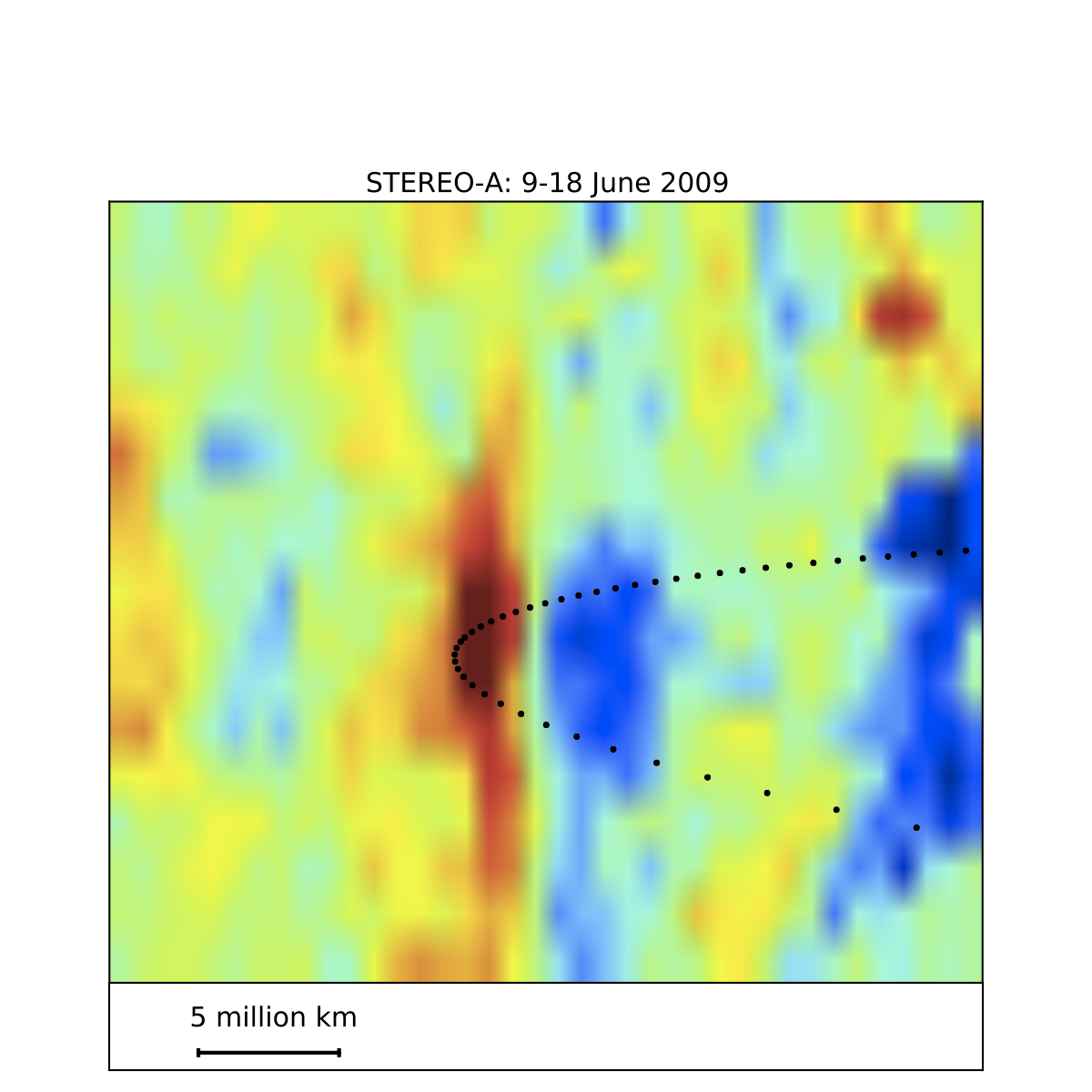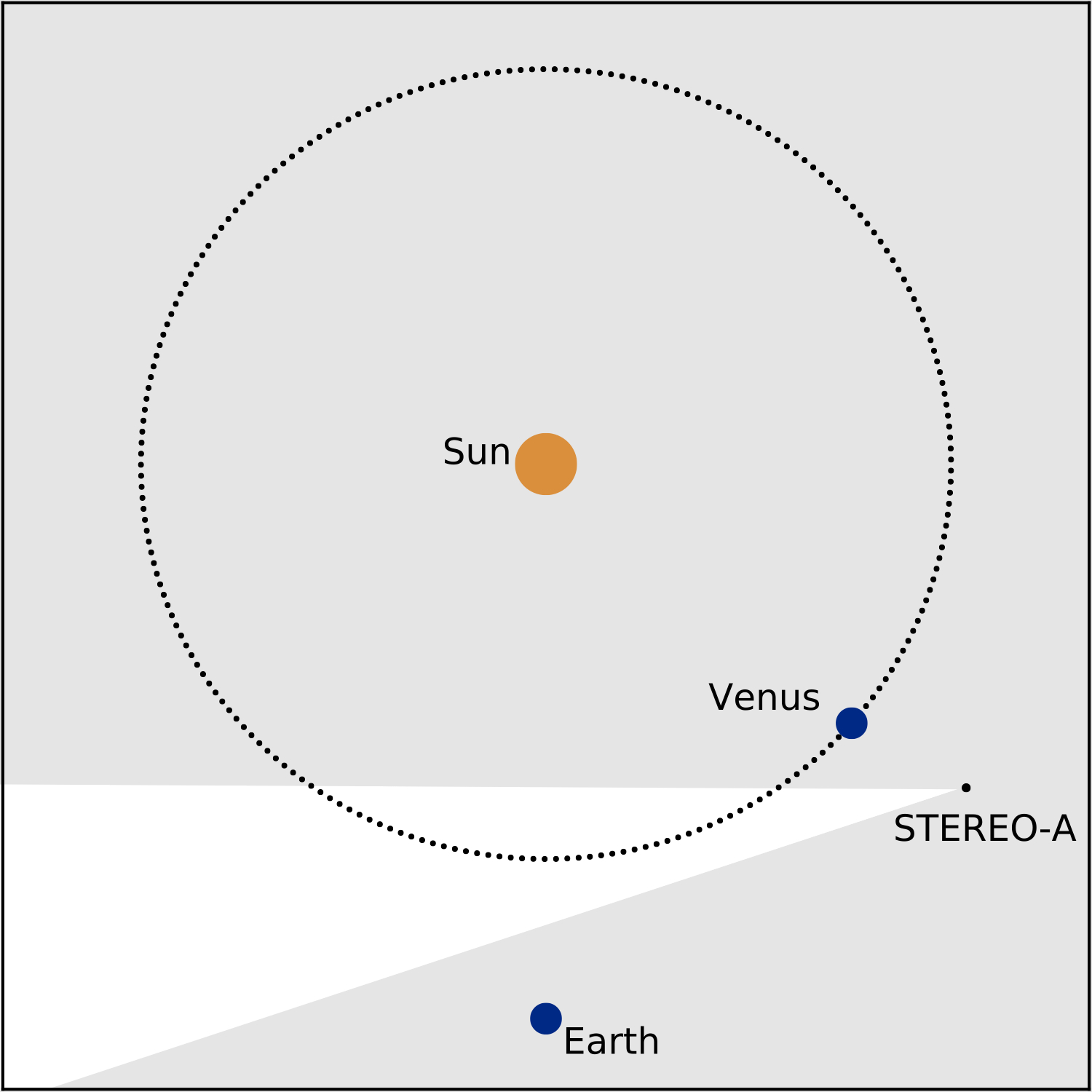
Scientists have found a huge, diffuse ring of dust near the orbit of Venus, marking the second time such a structure has been discovered in our solar system.
The dust ring stretches about 137 million miles (220 million kilometers) from end to end, though it's just 10 percent denser than the background cloud that pervades interplanetary space and produces the glow known as zodiacal light, researchers said.
"If we could see it unaided from Earth (which of course we can't because it is far too faint), it would stretch 45 degrees either side of the sun," study lead author Mark Jones, of The Open University in the United Kingdom, told SPACE.com via email. [Mysterious Venus: 10 Weird Facts]
A similar ring was detected near Earth's orbit about 20 years ago, Jones added.
"So we have added to our knowledge of the 'geography' of the solar system," he said.
Several different space missions — including the Soviet Union's Venera 9 and 10 probes in the 1970s — have spotted hints of a dust ring near Venus, but the evidence had not been conclusive. So Jones and his colleagues set out to see if the structure could be confirmed.

They modeled the way a ring near Venus should scatter light, then looked for the feature in images captured by NASA's twin STEREO (Solar TErrestrial RElations Observatory) probes, which have been studying the sun since launching in late 2006.
Breaking space news, the latest updates on rocket launches, skywatching events and more!
The STEREO images did indeed reveal a dust ring. But, in something of a surprise, it looks significantly different than the ring near Earth's orbit, featuring two distinct "steplike" components. One of these steps is interior to Venus' orbit, while the other lies outside the planet's path around the sun, researchers said.
Such dust rings have arisen from the trapping of interplanetary dust into orbits resonant with those of Venus and Earth. (Resonant orbits are those whose periods are related by a ratio of two small integers, such as 2 and 3; such an orbital relationship often magnifies the gravitational influence two celestial bodies exert on each other.)
While the rings themselves are likely long-lived structures, the individual pieces that comprise them don't stick around for millions of years.
"The lifetime of dust trapped in the ring is only about 100,000 years, so it does not provide much of a clue to the formation of the solar system," Jones said. "However, the ring is very important in understanding what happens to interplanetary dust, which we know from other studies is formed from asteroid collisions and cometary dust."
Further study of the dust rings near Venus and Earth could also aid researchers peering beyond our solar system, he added.
"These rings will need to be understood for future missions which aim to image exoplanets using interferometers, because the rings can mask the signal from the exoplanet," Jones said.
Follow Mike Wall on Twitter @michaeldwall and Google+. Follow us @Spacedotcom, Facebook or Google+. Originally published on SPACE.com.
Join our Space Forums to keep talking space on the latest missions, night sky and more! And if you have a news tip, correction or comment, let us know at: community@space.com.

Michael Wall is a Senior Space Writer with Space.com and joined the team in 2010. He primarily covers exoplanets, spaceflight and military space, but has been known to dabble in the space art beat. His book about the search for alien life, "Out There," was published on Nov. 13, 2018. Before becoming a science writer, Michael worked as a herpetologist and wildlife biologist. He has a Ph.D. in evolutionary biology from the University of Sydney, Australia, a bachelor's degree from the University of Arizona, and a graduate certificate in science writing from the University of California, Santa Cruz. To find out what his latest project is, you can follow Michael on Twitter.
